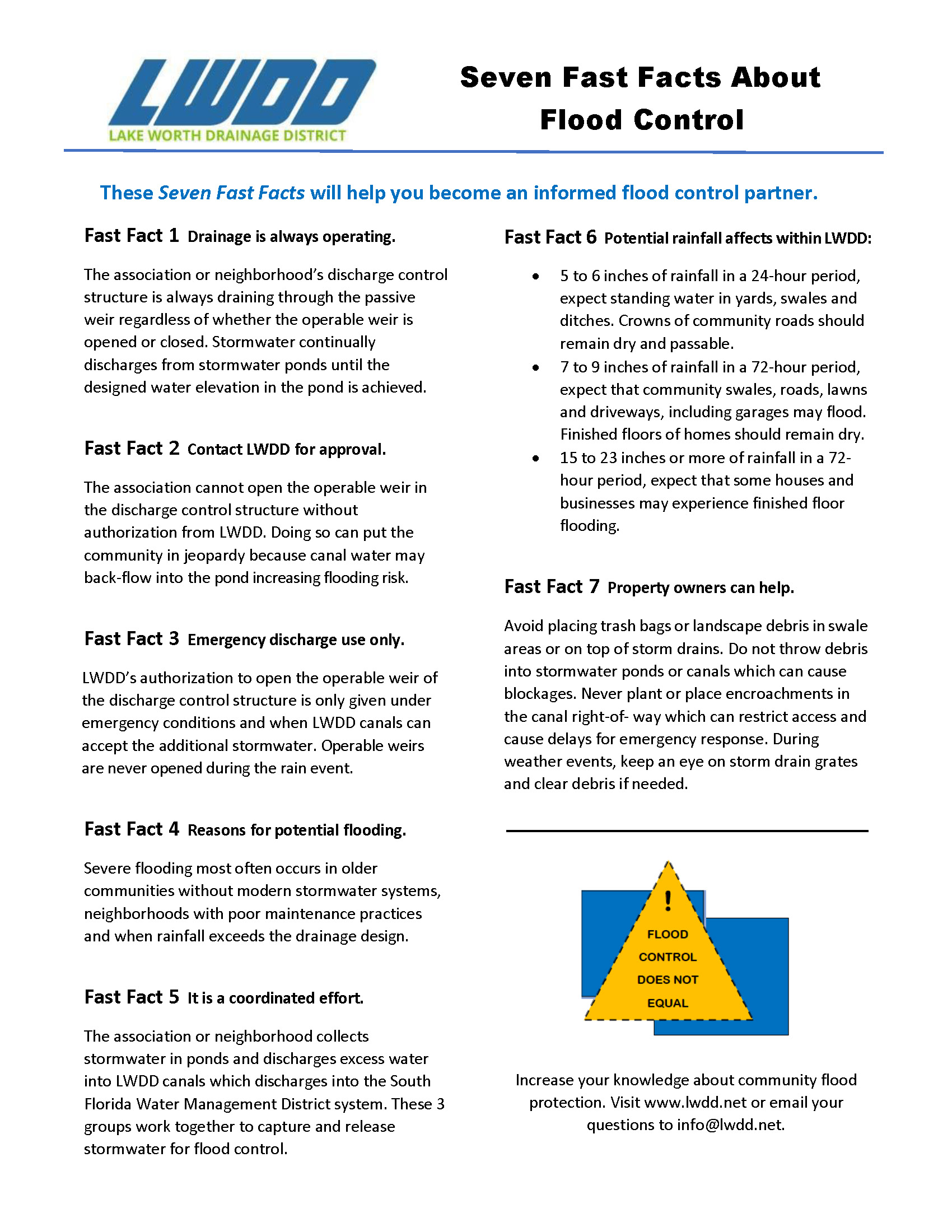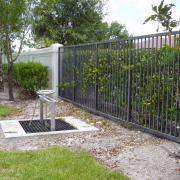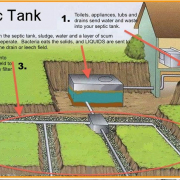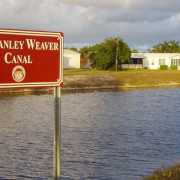Water Management Is 24/7
South Florida’s tropical weather events can be intense and seriously threaten property and life. In response, the Lake Worth Drainage District (LWDD) monitors canal elevations and makes necessary operational adjustments to its water control structures to provide flood control for the 200 square miles of land within its boundary.
Water control structures act like dams, allowing stormwater to be released or held back depending on weather conditions. The technology used to operate LWDD’s water control structures is called Supervisory Control and Data Acquisition (SCADA). As the water rises in the canal and reaches a pre-determined elevation, SCADA will slowly open control structures releasing water for flood control. Similarly, as water elevations return to normal levels the control structure gates will close, holding back water for conservation and water supply demands.
This response to changes in the canal system happens automatically, 7 days a week, and can be monitored remotely by staff using mobile devices. However, in anticipation of severe weather, staff can override the automated SCADA system and make manual adjustments as needed. The remote monitoring and operating functions of SCADA eliminates the need for LWDD staff to venture out during dangerous weather conditions to operate control structures, as well as significantly reduces response time.
Another advantage to SCADA is the capture of operational data by the system which can be used to evaluate future water supply needs and historical flood control responses. This data can be shared with regional water management partners for enhanced flood control coordination and water conservation measures.
LWDD is proud to provide the residents and businesses within our boundary this 24/7 flood control technology.






